If you happened to walk along the Bregana River on a crisp morning in early 2025, you might have seen a small group of scientists wading through the shallow, clear water with backpacks, nets, and scanners in hand. To most passers-by, it looked like just another day of fieldwork.
But for us, it was a milestone — continuation of monitoring one of Croatia’s most endangered fish, Telestes souffia, known locally as blistavac.
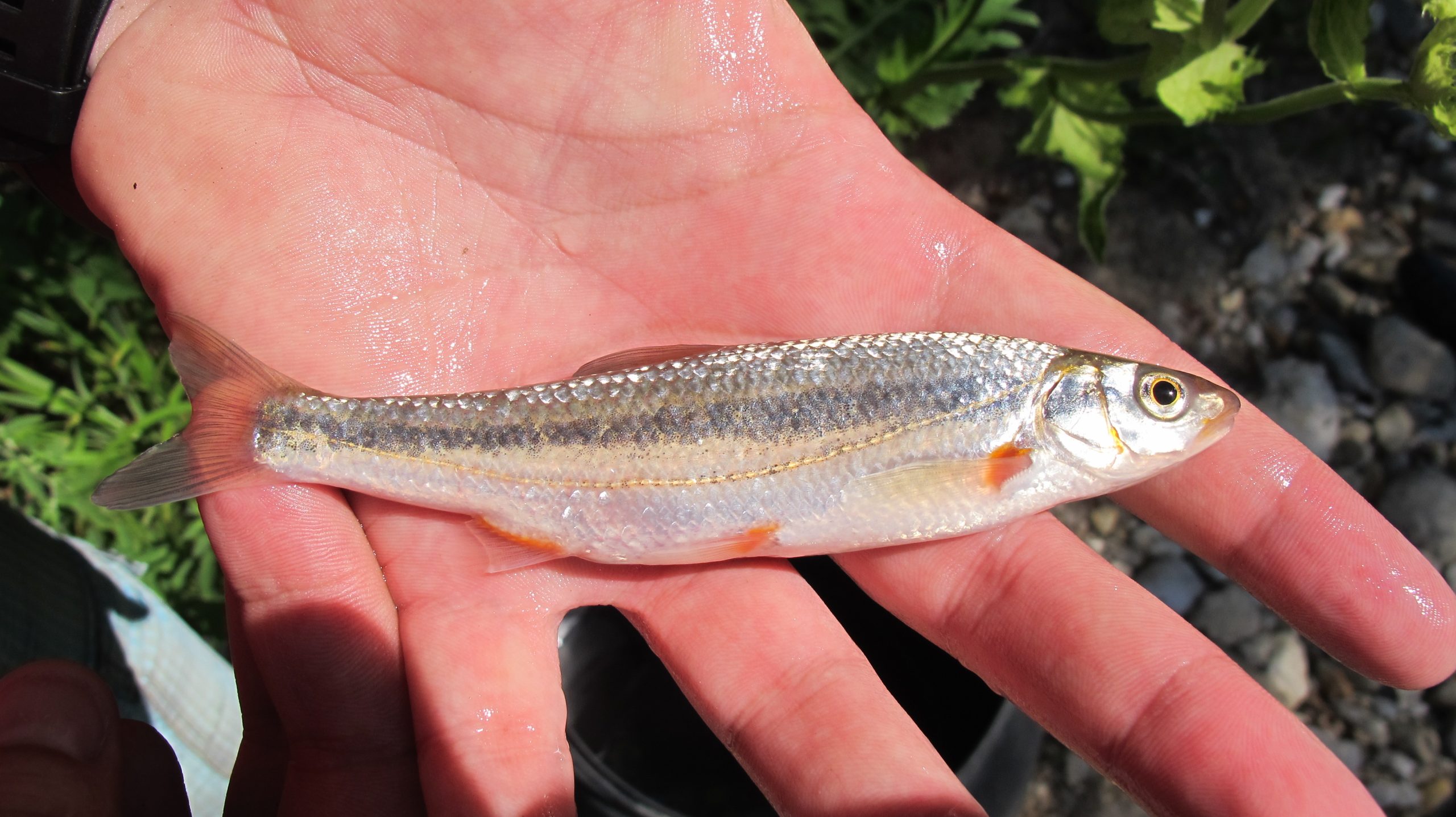
And this trip was special: 30 adult individuals, each over 5 cm long, were carefully caught, measured, and equipped with tiny PIT (Passive Integrated Transponder) tags from BIOMARK. These tags act like a lifetime ID card — a way to follow each fish’s journey, survival, growth, and movement through what remains of its Croatian habitat.
The sun was out, the water was cold and clear, and everything about the day hinted at hope.
A Decade of Research
The Bregana River, flowing along the Žumberak–Samoborsko gorje foothills, is the last confirmed habitat of Telestes souffia in Croatia. We began the population monitoring here in 2013, and lasted till 2017, when the first population assessment estimated the density of 2 – 3 individuals per 100m2. Total number of individuals in whole Brgana Natura 2000 site was estimated to ~5150 individuals.
These data already pointed to a small, fragmented population facing pressure from habitat changes, erosion, sewage inflow at certain sites, and hydrological unpredictability.
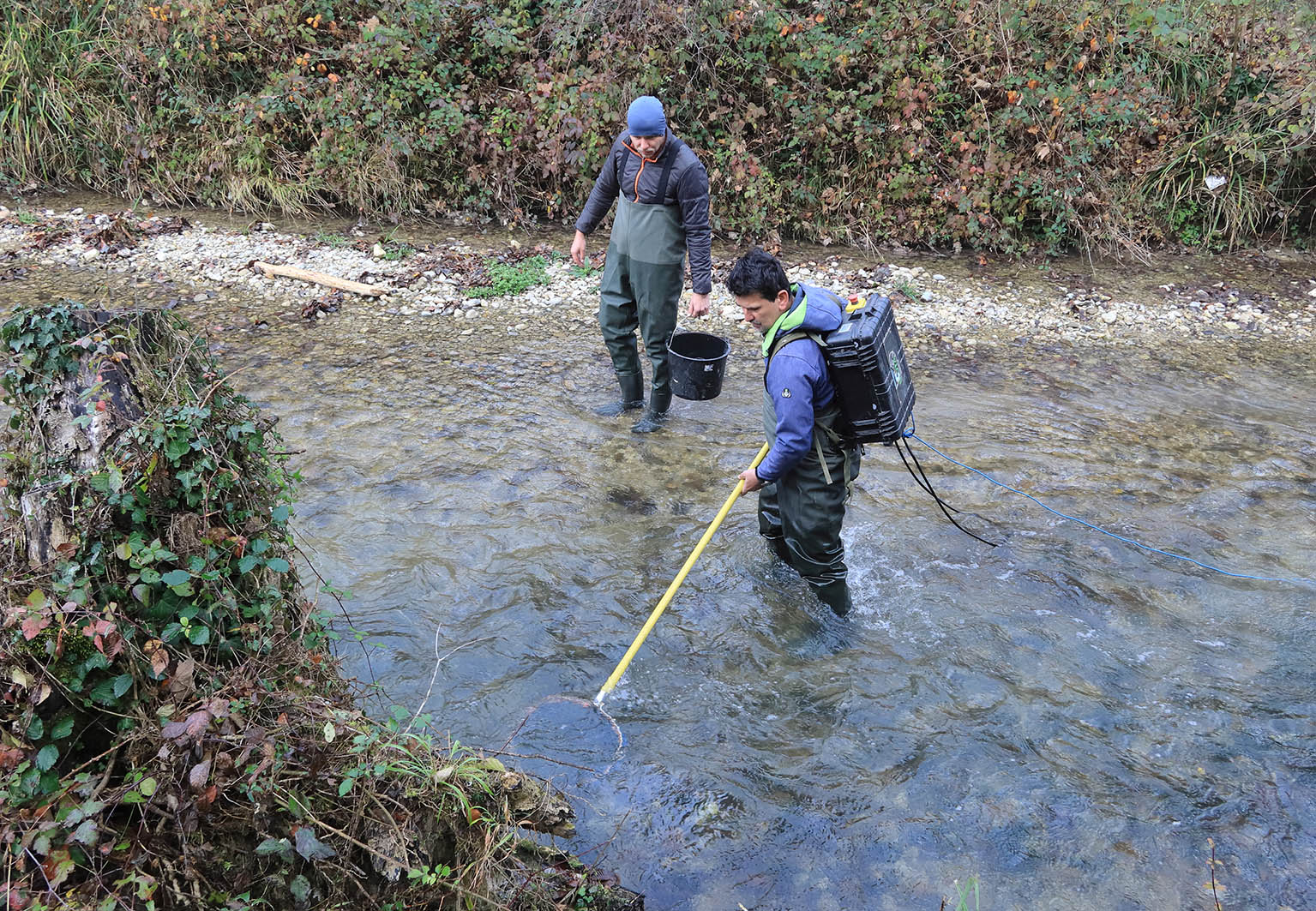
Fish are caught by electrofishing and marked with PIT tags. Next time we visit, we check all cought fish if they are already tagged (recapture) or new (to be tagged). Based on multiple visit we develop a Capture/Mark/Recapture model to estimate population size, density, surval rate, etc.
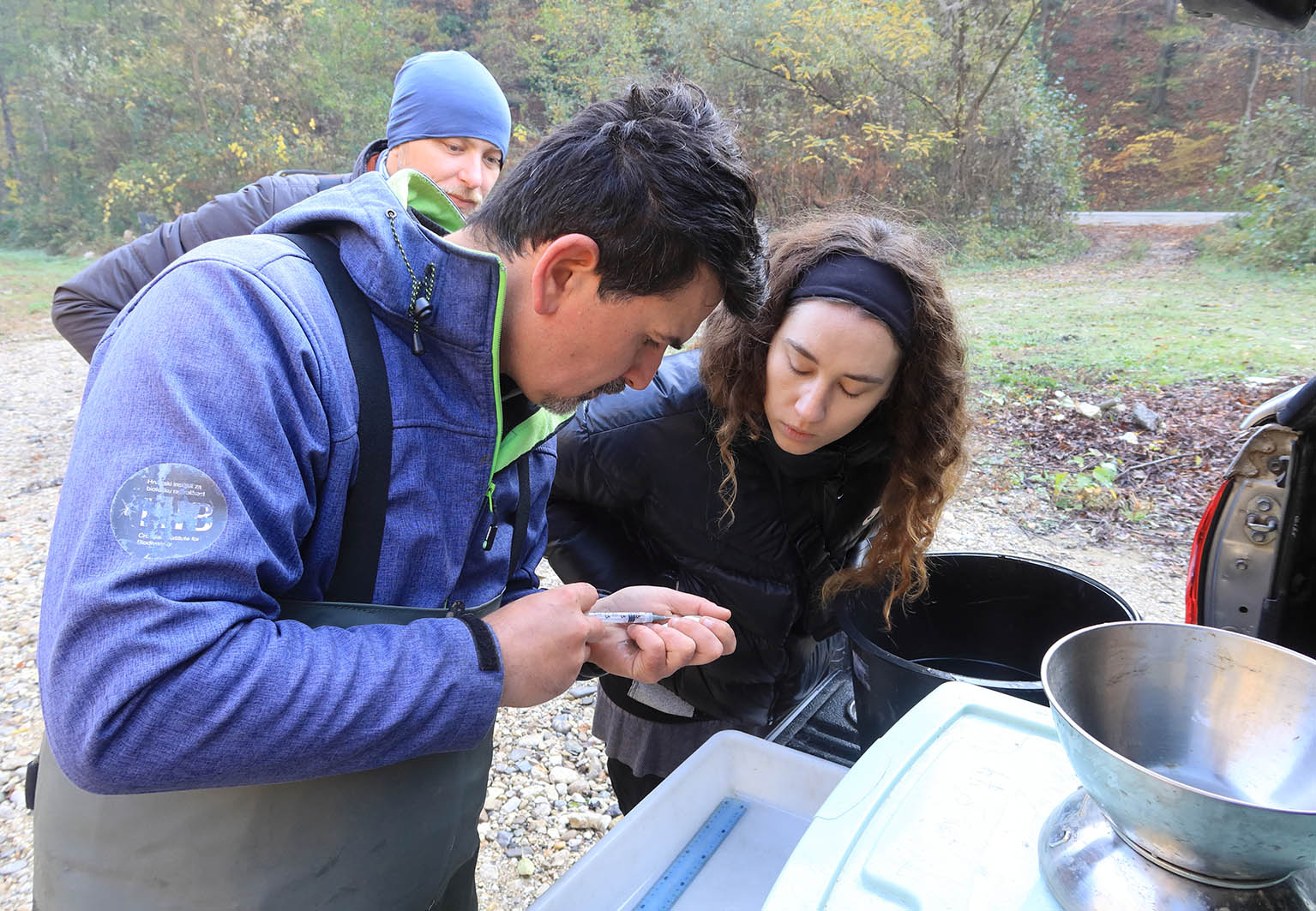
Fast-forward to 2025: A Beautiful Day and a Critical Mission
This year’s fieldwork brought both relief and renewed determination.
On the final field trip of 2025, our team successfully:
-
Recorded and PIT-tagged 30 adult blistavac,
-
Confirmed their presence in the same lower-flow refuges where they survived past floods,
-
Collected detailed size and weight measurements,
-
Photographed every individual for long-term morphological tracking.
For such a small, vulnerable population, every tagged fish represents another data point, another chance to understand how these tiny survivors adapt.
As always, after tagging and a brief recovery, each fish swam back into its home pool — a moment that never gets old, even after a decade.
Why PIT Tagging Matters
Unlike visible tags used in some wildlife studies, PIT tags:
-
last a lifetime,
-
don’t interfere with behavior,
-
allow precise identification with a handheld scanner,
-
enable robust population estimates through recapture.
For species like Telestes souffia, which hides in shaded microhabitats, migrates only short distances, and often lives in fragmented channels, PIT tagging is the only reliable way to track survival year after year.
What We Know — and What’s Coming Next
Population density estimates for Telestes souffia fluctuate with erosion, floods, and human impact. The 2017 report showed a region in transition, with the species missing from several historical sites and persisting only where the river still provides deep, shaded pockets and stable substrate.
The 2025 population estimate is currently being analyzed — and the dataset is richer than ever because of the 30 new tags added this year.
These results will help answer key questions:
-
How many fish survive from year to year?
-
Are adults returning to the same refuges?
-
Is recruitment still happening, or is the population aging?
-
How have habitat interventions (like rock placement at the mouth) shaped the population?
We don’t have the answers yet — but they’re coming soon.
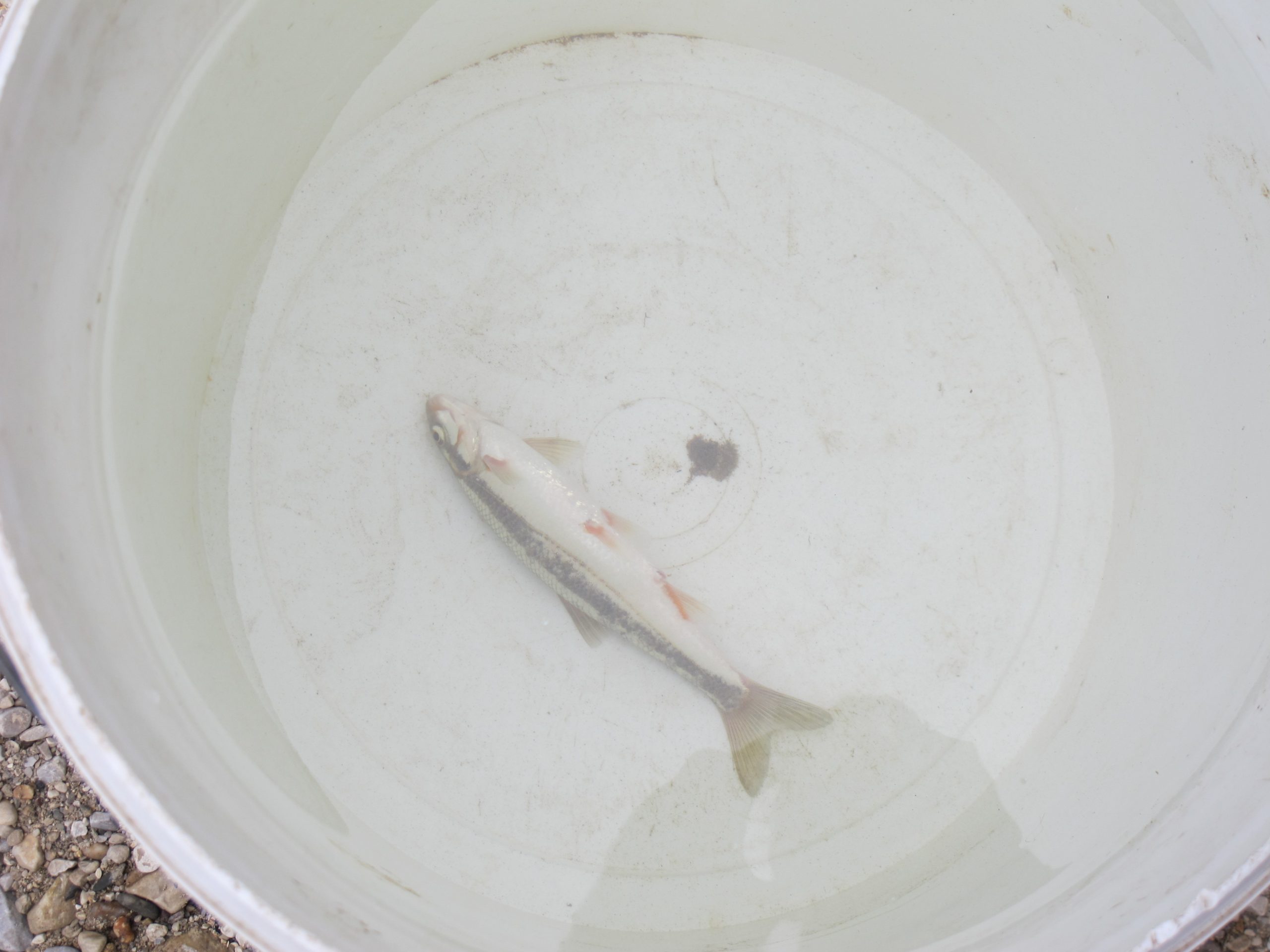
Anestetic at work before tagging
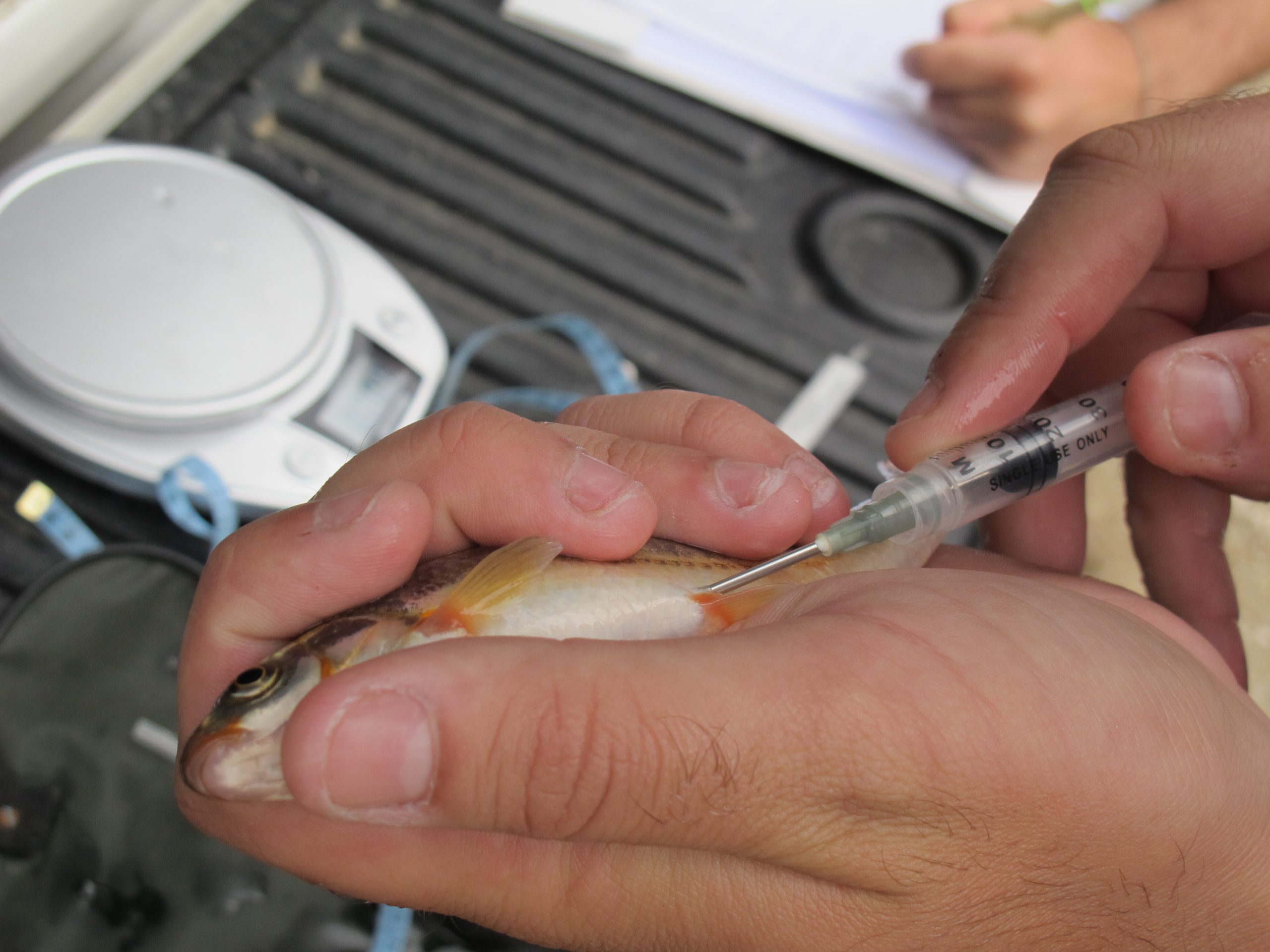
PIT tag insertion
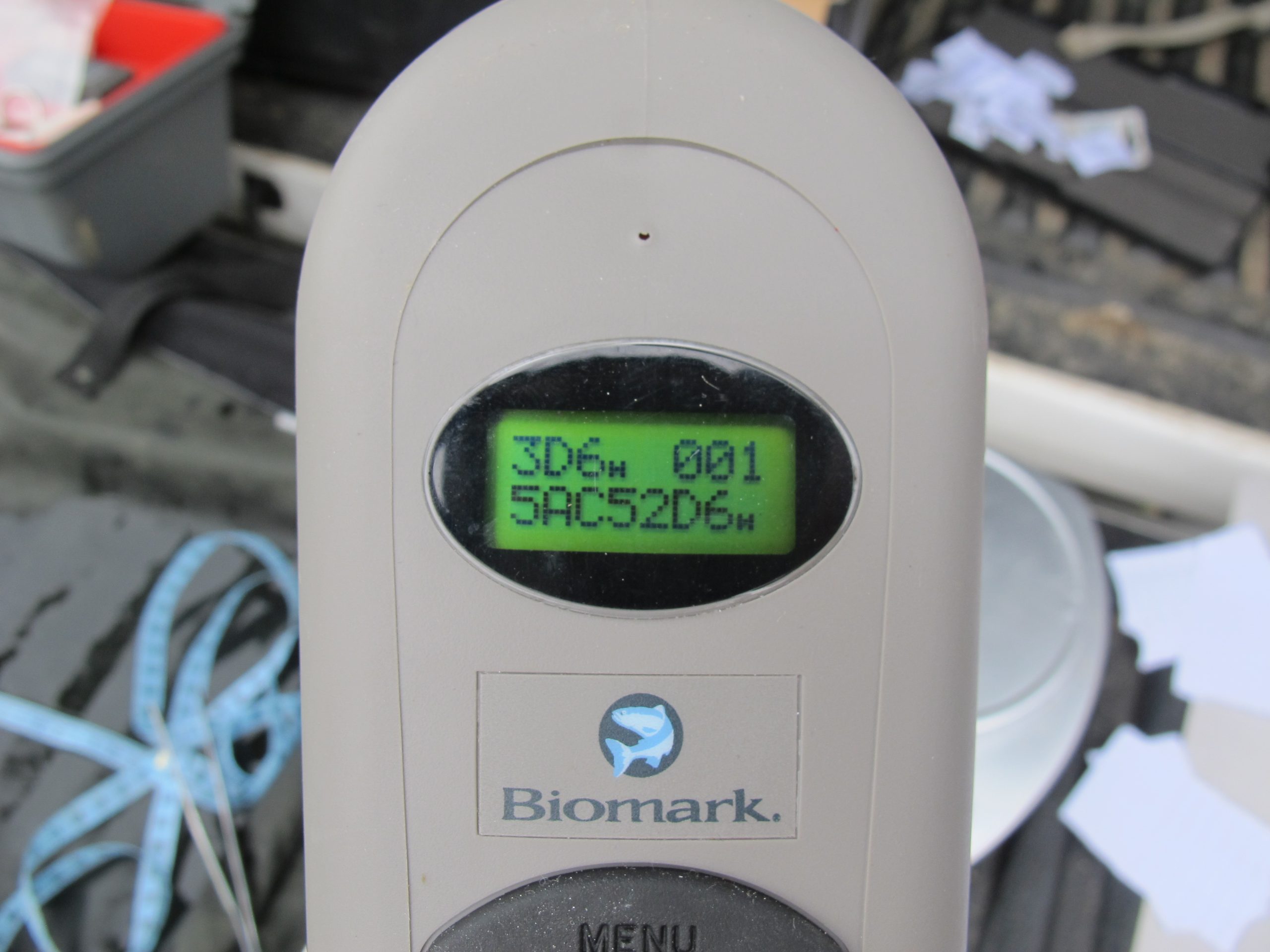
Tag reading…
Before tagging, each fish is gently anesthetised to keep it calm and immobile, preventing any risk of injury during handling.
Once fully sedated, the individual is measured for standard body length and total body length, and its body mass is recorded. After measurements, a precise 8 mm PIT tag is carefully inserted into the abdominal cavity using a fine applicator needle. Finally, the tag’s unique code is read with a scanner and added to the field protocol before the fish is released back into the water.

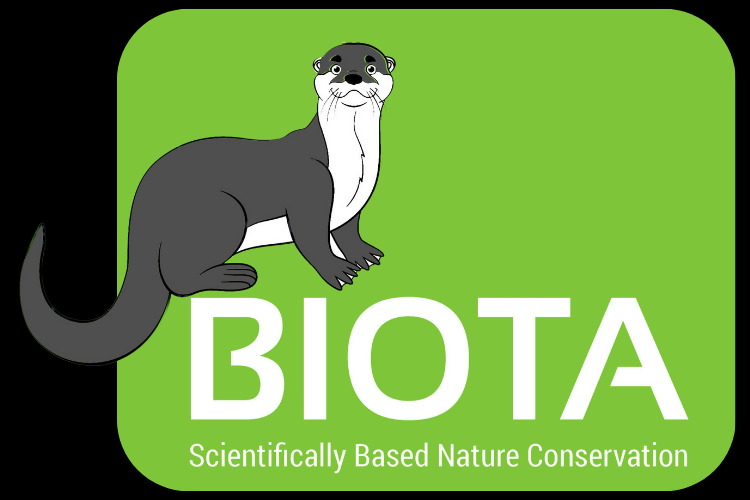

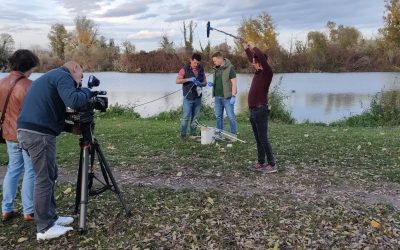


0 Comments